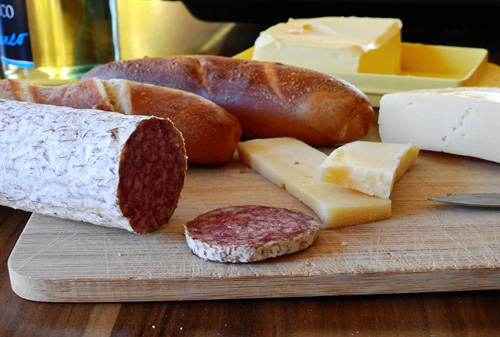Industry News
History & Application of Natamycin
Source:未知Author:admin Addtime:2021-08-03 Click:
Natamycin was first produced in 1955 from a culture filtrate of a Streptomycetes isolated from a soil sample in South Africa. Natamycin, also known as pimaricin, is a fungicide of the polyene macrolide group, commonly used as a biopreservative in the surface treatment of cheeses and sausages to inhibit yeasts and moulds. It also can be used in yogurt, baked goods, beverages and wines. The European food additive number for it is E235.
It is available in four types in the market, pure natamycin, 50% natamycin preparations with excipients of lactose, glucose or salt.
How does it work?
Natamycin inhibits the growth of yeast and mold, also prevents the production of their toxins, but has no effect on bacteria as their membrane lacks sterols. Its mechanism of action is binding to sterols (principally ergosterol) in the fungal cell membrane instead of permeabilizing the membrane , which is the functional mechanism of chemical synthesized preservatives – sorbates and benzoates.How to use it?
Cheese
Spray natamycin aqueous solution on the surface of the cheese to prevent cheese mildew and extend the shelf life. It is also workable by soaking cheese in the solution.Dried meat
Soak the sausage with a concentration of 300mg/L natamycin aqueous solution to prevent casing stickiness and mildew.Others
It can prevent spoilage and extend the shelf life of juices of fruit & vegetable, and wine by adding 5-10mg/kg natamycin. It can also be used in un-yeast fermented baked goods.Is natamycin safe?
Yes, its safety when used as a food additive has been approved by the U.S. Food and Drug Administration (FDA), Canada Health, European Food Safety Authority (EFSA), Joint FAO/WHO Expert Committee on Food Additives (JECFA), as well as other authorities.FDA
It is permitted for direct addition to food for human consumption and may be used as an antimycotic on cheese in amounts not more than 20 mg/kg.By the way, FDA had no question on DSM’s conclusion that natamycin is Generally Recognized as Safe (GRAS) when used as an antimycotic to prevent the growth of molds and yeasts in ready-to-drink tea beverages, fruit-flavored beverages & energy drinks, and sport and isotonic drinks at levels not more than 0.5 mg/kg AND in yogurt at levels not to exceed 5 ppm.

